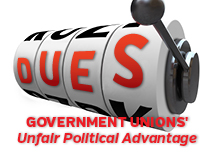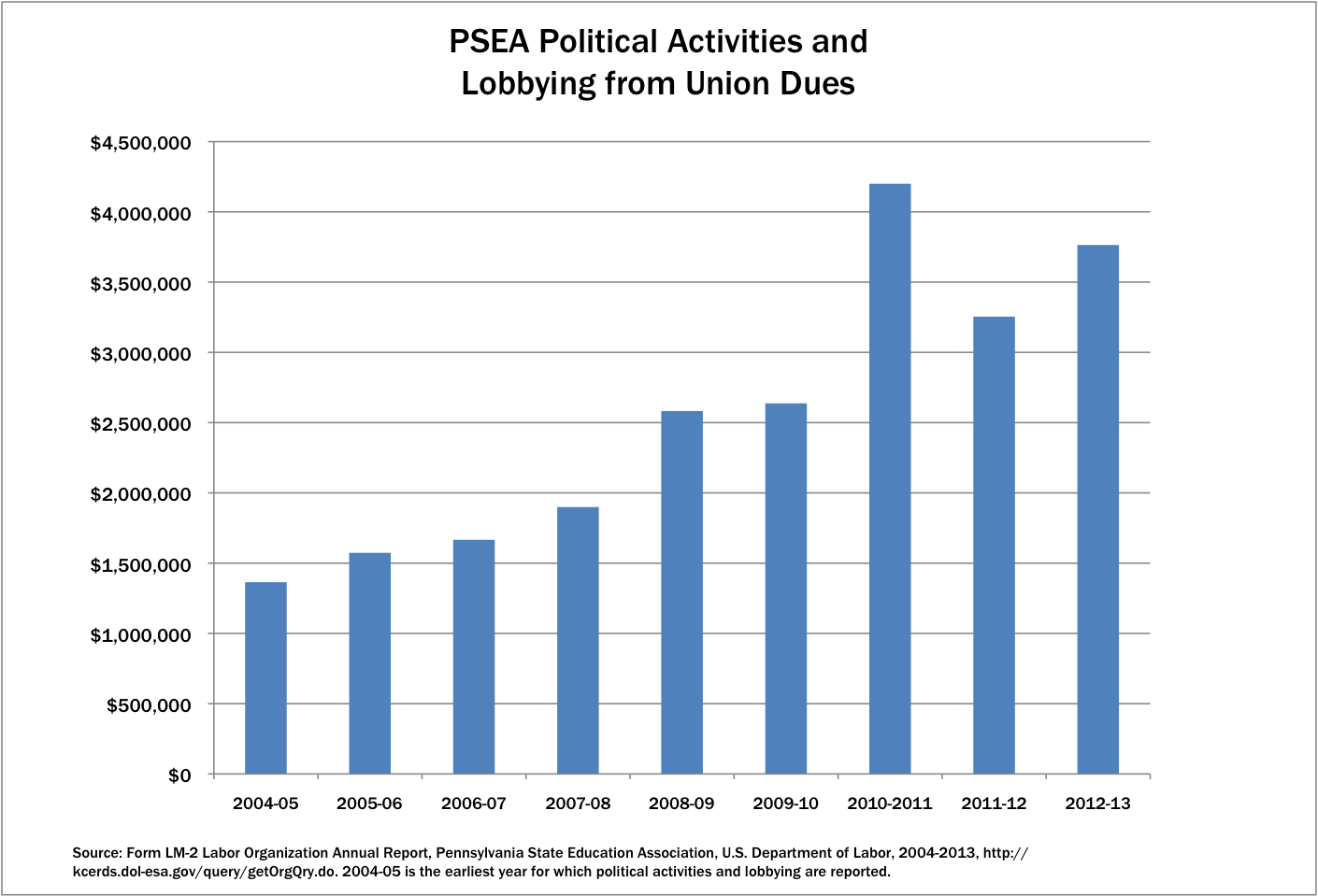Media

PSEA Pours $3.8 Million Into Politics
In the last year, the Pennsylvania State Education Association poured $3.8 million of its members’ dues into “political activities and lobbying,” according to its 2013 financial disclosure report. That’s an increase of 46 percent in the last five years.
Bear in mind this spending comes from teachers’ union dues, which school districts collect automatically from payroll—just like a tax. In effect, taxpayers are collecting money on behalf of a political organization, a privilege no other private group enjoys. In addition, ordinary teachers have no say in how their union leaders spend their dues.

Below is a partial breakdown of how the PSEA spent that $3.8 million on politics:
- $2.3 million to union employees for political and lobbying activities.
- $100,000 to national Progressive group America Votes.
- $110,009 to an employment service, which included expenses labeled as “member political consulting.”
- $70,875 to the Pennsylvania AFL-CIO, largely for the CLEAR Coalition, which comprises several government labor unions working to affect Pennsylvania state budget spending.
- $64,825 for meetings and hotel lodging.
- $64,685 for post-election and Pennsylvania budget surveys.
- $40,561 to run phone banks and kiosk lines.
- $22,524 on pledge forms, donation envelopes and promotional items for PACE, the union’s political action committee.
- $22,000 to pollster Terry Madonna for research.
- $5,000 to the Education Policy and Leadership Center for “school funding campaign.”
In addition, the National Education Association gave a whopping $650,000 this year to Pennsylvanians for Accountability, a mysterious advocacy group that cropped up running prime-time television ads accusing Gov. Tom Corbett of spending billions in corporate tax breaks. Pennsylvania teachers and educators across the country were forced to fund the ads through their union dues.
When both taxpayers and teachers are forced to foot the bill for such politics, it’s high time we end the power cycle of automatic dues deductions.